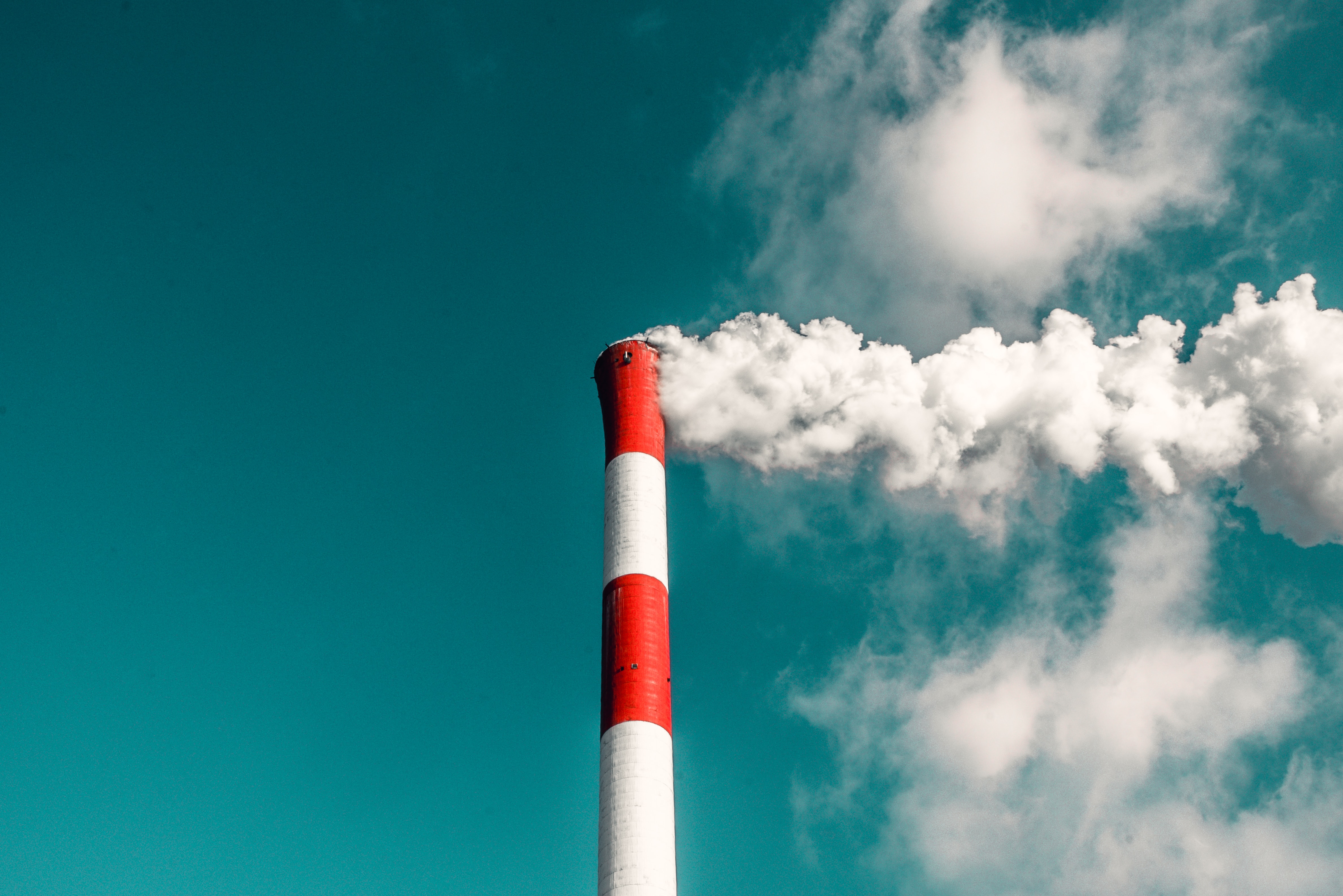By David Beech
“DENIAL IS NOT A POLICYâ€Â
Whereas most people at last week’s climate strike held signs condemning a lack of action, few were dedicated to what action should look like. A national awareness of the problem, and a need for a solution, has opened the door for real change, but where do we go from here? Climate change is a huge challenge to face, but millions of Americans are already doing their part by factoring their carbon footprint into everyday decisions. The most effective action will spread that thinking across our economy and put us on a path towards a better future.
That path forward is determined by where we must end up. According to reports by the Intergovernmental Panel on Climate Change (IPCC), it is vitally important that the rise in average global temperature, a consequence of greenhouse gas emissions, is kept to 1.5°C or lower¹ (average global temperature has already risen 0.8°C since the industrial revolution). If we fail to meet that goal, we will face extreme changes in weather patterns, complete destruction of our coral reefs, and millions of climate refugees fleeing parts of the globe that are no longer inhabitable. To avoid these dire outcomes, we need to vastly decrease the amount of greenhouse gases, notably carbon dioxide (CO2), emitted into the atmosphere every year. Ultimately, that decrease must go all the way to zero by the year 2050¹. Unfortunately, carbon emissions reached an all-time high last year.
Something needs to change, and clearly the status quo, in which climate action has been largely left to the private sector, has not proven up to the challenge. The answer then, is government action– targeted at those emitting the most CO2.
For every ton of CO2 that is released into the atmosphere, there is a negative cost for our planet. The air gets a little warmer, sea levels rise, ice melts, storms grow in intensity… this effect is commonly known as the “Social Cost of Carbonâ€. The problem is, companies that release CO2 never have to pay it—pumping out more CO2 never affects their bottom line. A carbon price would change that. With a carbon price, the federal government would fine fossil fuel companies for every ton of CO2 released as a result of their actions. This will force most of them to reduce emissions in order to remain solvent, while others will simply go out of business. This policy would take the place of complex EPA regulations and more effectively reduce emissions—with an added bonus: The revenue from the fees will then be returned to the American people in the form of a monthly payments known as “Carbon Dividendsâ€. Delivering these payments will not be burdensome because the federal government already has the infrastructure required. 61 million Americans currently receive social security benefits every month and 98% of those benefits are directly deposited into bank accounts. The same electronic transfer system would be used and the cost of mailing checks would be minimal (the Federal Government doesn’t pay for stamps). This policy approach is commonly known as a “Carbon Fee and Dividendâ€.
This policy has been endorsed by every former Chair of the Federal Reserve, 27 Nobel Laureate Economists, 15 former Chairs of the Council of Economic Advisors, and more than 3,500 Economists from across the United States². Here’s why:
It Maximizes Impact. Scientists tell us that we need to be carbon neutral—a situation in which the amount of carbon in the atmosphere stays the same over the course of a year—by 2050. A great policy will put us on a clear trajectory to meet that goal. This policy would put the United States on that trajectory by reducing emissions at least 40% by 2030³. That is a significantly larger reduction than our previous commitment under the Paris Climate Agreement (26-28%) and the Obama Administration’s Clean Power Plan (32%)â´.
It Incentivizes Innovation. The best way to reduce carbon emissions varies depending on location, industry, and technological advances. A carbon price creates an incentive to reduce emissions, but it doesn’t define how emissions are to be reduced. This means a carbon price is “technology neutral†and incentivizes the most efficient method of emission reduction. This could lead to revolutionary advances in technologies like energy storage, carbon capture, and renewable energy.
It has Bipartisan Support. Fighting climate change cannot continue to be a wedge issue. When asked if a climate solution should be bipartisan, 80% of American’s said yes. That trend holds across party lines, with 75% of Republicans and 83% of Democrats responding in favor of a bipartisan solutionâµ. Carbon Fee and Dividend legislation has already been introduced in both the House and the Senate with bipartisan co-sponsors. Republicans and Trump Voters support this plan 3-1â¶, and that number grows to nearly 7-1 among GOP voters under 40âµ. Carbon Fee and Dividend is popular, and durable, because it addresses the problem of loss aversion. As years of psychological research shows, we tend to avoid short-term pain even if it leads to greater long-term benefits; Carbon Dividends offset that short-term pain and thereby eliminate one of the largest impediments to climate action.
It Is Equitable. Poor and minority communities are the hardest hit by the effects of climate change. Our solution should prioritize improving the effects of climate change on these communities in particular. This is why the monthly Carbon Dividend payments are so important. After the carbon fee is enacted, companies will pass some of the additional cost on to consumers by increasing energy prices. The monthly dividends will offset these additional costs. For low-income Americans, who consume less energy on average, the payments will exceed the increased cost, leaving them with more money to save, or spend on things they needâ·. For wealthy individuals, the dividends will not cover the increased costs, forcing them to spend more of their money or decrease their energy usage.
The current legislation, H.R. 763, features a strong initial fee that increases annually at a rate necessary to drive significant emission reductions. It also includes environmental safeguards. These provisions increase the fee or add regulations if emission reduction targets are not met. Assuming the legislation isn’t watered down as it moves through the legislative process, a Carbon Fee and Dividend offers the best path forward for climate action in the United States. The only remaining obstacle is political will.
Unfortunately, political will has been somewhat hard to come by. Broad support for the legislation has not resulted in significant attention or activism. More extreme policies have dominated press coverage. Some Republican legislators have expressed support, but the vast majority have not. Republicans need greater political cover if a sizable number will eventually support the bill. That cover, can come from constituents communicating with their representatives. We need to call, send letters, visit congressional offices, and show up at town halls to take advantage of the growing momentum for climate action.
Greta Thunberg, and other young activists, have inspired a global movement for change. An estimated 4 million people around the world participated in the climate strike last week. As momentum continues to build, our activism must shift towards effective policy. Carbon Fee and Dividend legislation is the policy we need, and now is the time to start advocating for it.
If you’re a student leader, encourage your organization to join Students for Carbon Dividends (S4CD). Their founding coalition comprises 114 student organizations from campuses across the country. If you work for a business that cares about the environment, push them to join the American Sustainable Business Council (ASBC). They advocate for this policy on behalf of more than 200,000 business members. If you’re a concerned citizen, get to know Citizens Climate Lobby (CCL). They are a grassroots advocacy organization with over 500 chapters, including one in every state. Find a chapter near you and get involved. Finally, please share this op-ed with friends and family and tell your elected representatives why you support a Carbon Fee and Dividend.
David Beech is in his second year at NYU Wagner, pursuing a master’s in Social Impact, Innovation, and Investment. He previously worked for the American Sustainable Business Council and is currently Events Director for the Wagner Alliance for Climate Change and the Environment.
- IPCC, 2018: Summary for Policymakers. In: Global warming of 1.5°C. An IPCC Special Report on the impacts of global warming of 1.5°C above pre-industrial levels and related global greenhouse gas emission pathways, in the context of strengthening the global response to the threat of climate change, sustainable development, and efforts to eradicate poverty [V. Masson-Delmotte, P. Zhai, H. O. Pörtner, D. Roberts, J. Skea, P.R. Shukla, A. Pirani, W. Moufouma-Okia, C. Péan, R. Pidcock, S. Connors, J. B. R. Matthews, Y. Chen, X. Zhou, M. I. Gomis, E. Lonnoy, T. Maycock, M. Tignor, T. Waterfield (eds.)]. In Press.
- “Economists’ Statement on Carbon Dividends.†The Wall Street Journal, 16 Jan. 2019, www.wsj.com/articles/economists-statement-on-carbon-dividends-11547682910.
- â€Projected CO2 Emissions Reductions under the American Opportunity Carbon Fee Act of 2019,†Issue Brief 19-02 , Marc Hafstead, April 2019.
- Environmental Protection Agency (EPA). 2015b. Regulatory impact analysis for the Clean Power Plan final rule. Research Triangle Park, NC: Office of Air and Radiation. http://www2.epa.gov/sites/production/files/2015-08/documents/cpp-finalrule-ria.pdf.
- Luntz Global. (2019). Findings and Insights on GOP Climate Strategy, [Data Set]. Luntz Global Partners
- The Yale Program on Climate Change Communication and George Mason University Center for Climate Change Communication. (2018). National Survey Results on the
- Baker-Shultz Carbon Dividends Plan October 2018, [Data Set]. Nexus Polling. Retrieved from: https://www.clcouncil.org/media/YaleGMU-Poll-October-2018.pdf
- Horowitz, John, Julie-Anne Cronin, Hannah Hawkins, Laura Konda, and Alex Yuskavage. Methodology for Analyzing a Carbon Tax. Working paper no. 115. Office of Tax Analysis, US Department of the Treasury. January 2017.




